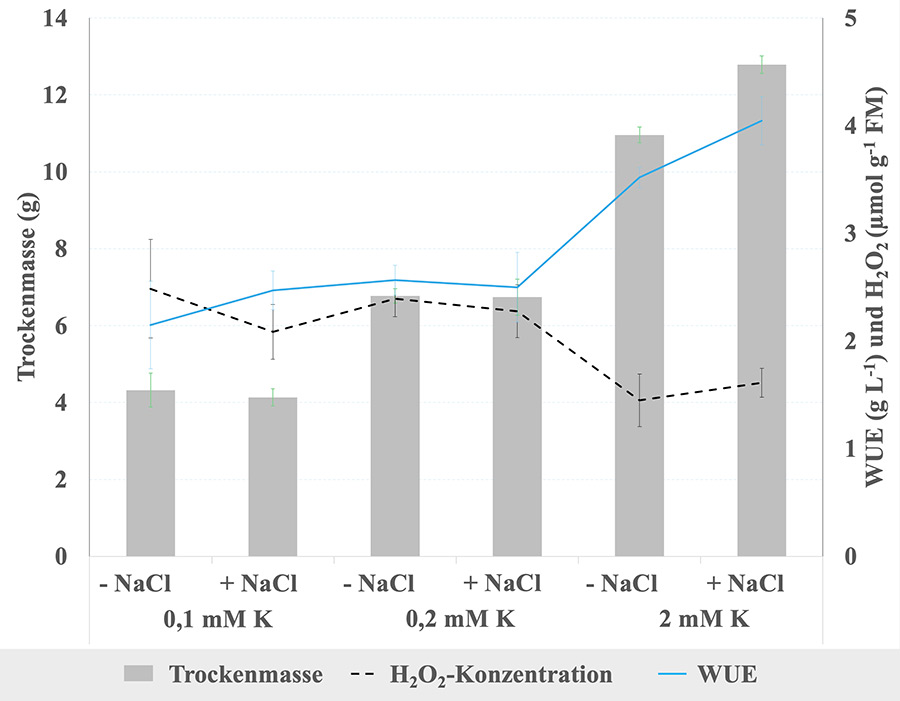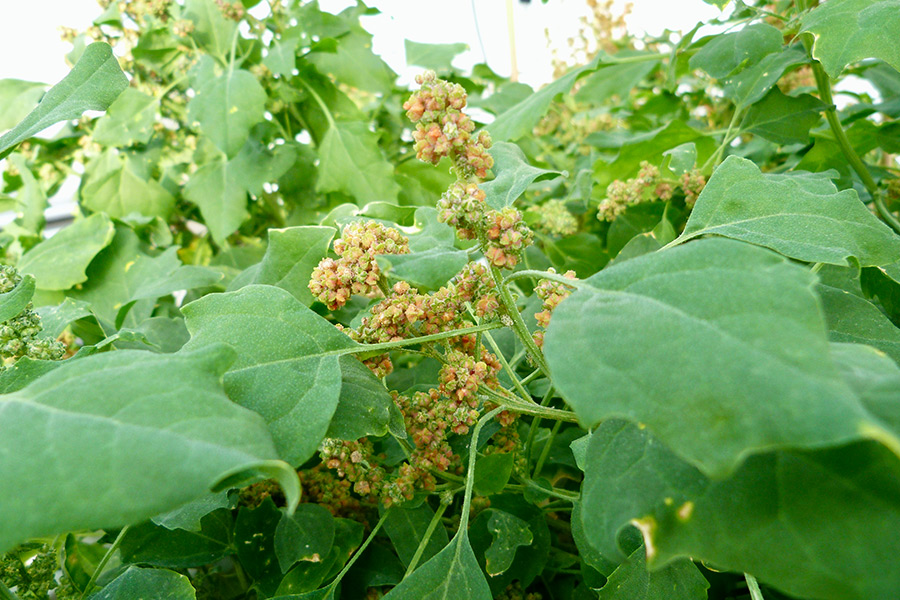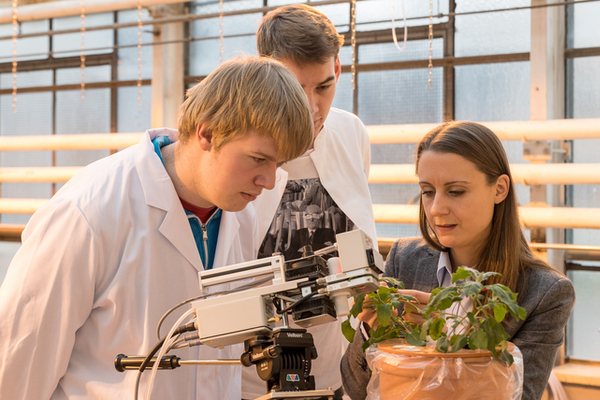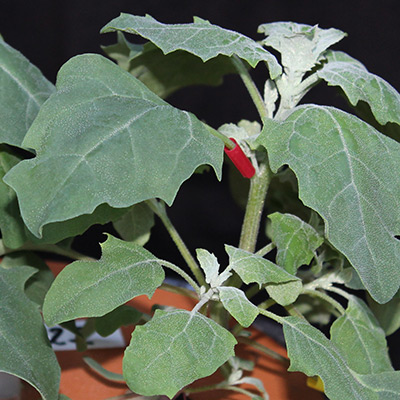Research
It is estimated that about 15 % of the total land area of the world has been degraded by soil erosion and physical and chemical degradation, including soil salinization. Currently, salt-affected soils are naturally present in more than 100 countries of the world, where many regions are also affected by irrigation-induced salinization. Based on this, halophytes play an important role as they are salt-tolerant plants. The facultative salt-tolerant species Chenopodium quinoa is a very important crop due to its edible seeds and its ability to grow in highly saline environments. It has been selected by the Food and Agriculture Organization of the United Nations (FAO) as one of the crops destined to offer food security in future.
Sodium chloride (NaCl), the most prevalent salt in soils, adversely affects the acquisition of essential nutrients because sodium (Na+) competitively inhibits the uptake of potassium (K+), calcium (Ca2+) and other cations, whilst chloride (Cl-) restricts anion uptake, affecting ion homeostasis within the plant. Furthermore, salinity may create specific ion toxicity as unbalanced presence of Na+ and Cl- in cellular and intracellular compartments inhibits many enzymatic activities, altering a wide range of important physiological processes for plant growth.
Plants have different mechanisms to counteract salt stress and this depends on each species. For example, Chenopodium quinoa has specialized trichomes known as salt glands or bladders. Sequestration of absorbed salt into these structures appears to be an efficient strategy contributing to salinity resistance in some drought and salt tolerant species. In addition, under salt stress, K uptake of quinoa tends to be enhanced. Thus, the regulation of K+ homeostasis is an important aspect of salt tolerance, and the ability to retain an optimal Na+/K+ ratio is believed to be crucial for tolerance and adaptation to salt stress. As first results, it was observed that K is very important in quinoa to increase its biomass and the water-use efficiency (WUE).

Dry biomass, water-use efficiency (WUE) and hydrogen peroxide (H2O2) concentration in quinoa plants supplied with different potassium (K) concentrations (0.1, 0.2, and 2 mM K supplied as K2SO4) under non-saline (0 mM NaCl) and saline conditions (100 mM NaCl). H2O2 concentration is an indicator for plant stress. FW = fresh weight. (Source: Turcios)
The aim of this research was to quantify the role of inorganic ions, mainly K+, for osmotic adjustment in quinoa, and investigate the accumulation of K+ and Na+ in the roots, and their transport to the shoot under saline conditions. For this purpose, several morphological and physiological parameters (e.g., stomatal density, biomass production, Na+/K+ ratio, chlorophyll content, photosynthesis rate, transpiration rate, WUE, leaf area) were determined.
The results were published at the beginning of 2021 in the peer reviewed Journal of Agronomy and Crop Science.









